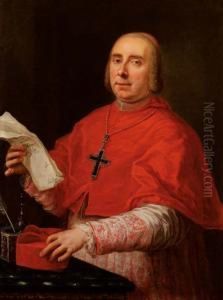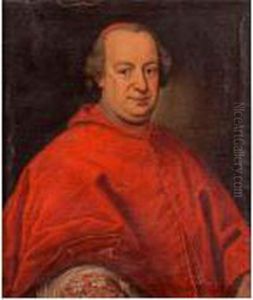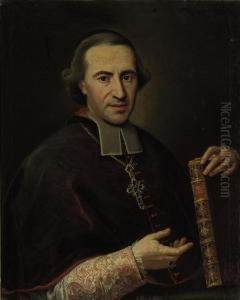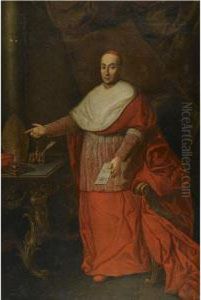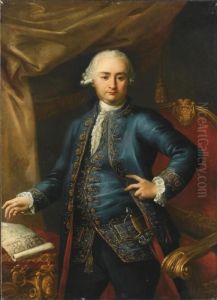Giovanni Domenico Porta Paintings
Giovanni Domenico Porta, also known as Giandomenico Porta, was an Italian painter who was active during the mid-16th to early 17th centuries. He is often confused with his more famous contemporary, Giambattista della Porta, who was a polymath and playwright. Not much is known about Giandomenico's early life, including his exact birth and death dates, but he is believed to have been born around 1530 and to have died around 1602.
Porta's artistic career was primarily centered in and around Naples. He was part of the late-Renaissance movement, and his work is characteristic of the Mannerist style that was popular at the time. This style is known for its artificial elegance, elongated forms, and a departure from the proportional norms that were established during the High Renaissance. Like many artists of his time, Porta's work was influenced by the Roman School and by the presence of other artists working in Naples, such as Agostino Carracci and his brother Annibale.
While not many of Porta's works have survived, those that have indicate that he specialized in frescoes and oil paintings with religious themes. He worked on commissions for churches and other religious institutions, where his art would serve devotional purposes and convey the spiritual messages of the Counter-Reformation, which sought to reaffirm Catholic doctrines and resist the spread of Protestantism. The Counter-Reformation played a significant role in shaping the art of this period, emphasizing dramatic effect and emotional intensity to engage viewers.
Despite his contributions to the art of his time, Giovanni Domenico Porta has not been extensively documented in art history, and as a result, he remains a relatively obscure figure. His works are overshadowed by those of his contemporaries, and his life and career have not been the subject of significant scholarship. Nonetheless, Porta's existing paintings contribute to our understanding of Mannerist art in Naples and the broader cultural milieu of late-Renaissance Italy.
